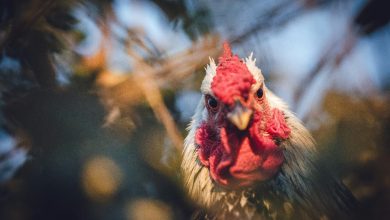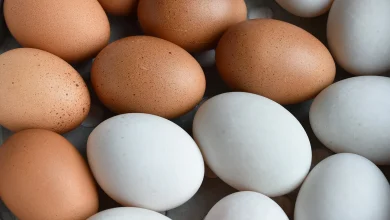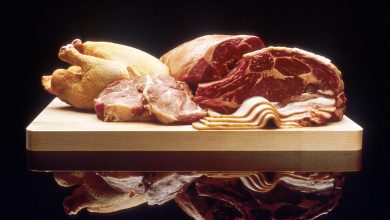Logic based advantages of battery cages for laying hens
Dr. Rajesh Kumar Singh, (Livestock & Poultry Consultant), Jamshedpur, Jharkhand,India
We believe animal welfare legislation should be on a science-based approach and not on the emotional factors that can be involved. Here in India some foreign funded NGOs & some paid so called animal welfare activist has taken the task of paralyzing the huge poultry sector of India which is valued of worth 125 lakh crores INR. & providing employment of more than 75 lakh families .India is producing the cheapest egg in the world through its well established world class infrastructures, scientific technology there by keeping its 3rd place in the egg production & 4th place in the chicken production in the world. India is still in the bottom line in the hunger and malnutrition index, so the egg and chicken meat has become important tools to solve this problems.
Of late, the welfare of hens used for egg production is a matter of concern for the veterinary profession and the general public here in India after notification of draft rules related to battery cages for poultry by AWBI. Layer bird housing is at the forefront, but other issues — such as the breeding of layer stock, disposal of male chicks, moulting practices, rearing of pullets, transport of birds and disposal of birds at end of lay — are also of concern to the public and profession.
The European Commission’s Welfare of Laying Hen’s Directive came into effect on 1 January 2012, banning the use of conventional battery cages for laying hens and the marketing of eggs from hens housed in such cages. It is the first piece of European legislation to phase out a method of production because of animal welfare concerns. New Zealand will phase out the use of battery cages by 2022 following the introduction of a new code of animal welfare. New battery cages can no longer be installed there, while cages already in use will be progressively removed from use over the next 10 years.
ADVANTAGES OF BATTERY CAGES AS PER REASEARCH & SCIENTIFIC LINE———
In the commercial egg production laying hens are managed at high densities. As a result, the environment in which the hens are raised is normally actively managed to encourage optimum productivity levels. The difference between the laying systems is that the cage system is better suited for large egg production. Therefore, better control of the environment, water and feed qualities, less fecal contamination of the drinkers and feeders are not easily maintained to protect the hens from the impact of outside environment in the non-conventional system. Isolation of the hens from fecal material in floor operation is essential to provide clean eggs with less bacterial contamination. Comparing the fecal contamination of eggs laid in different types of housing systems, Protais et al. and De Reu et al. found total bacterial counts of egg shells were higher in floor system compared with conventional cage system.
The bacterial count of the current study on eggs collected from the floor system was 6.58 log cfu/ml compared to 4.02 log cfu/ml for the eggs from the cage system at the zero hour collection. A higher shell bacteria count on eggs from organic and free range farms been previously reported by De Rue et al. Guillam et al. reported higher dust contamination in perchery rearing systems compared to cage poultry houses. Radon et al attributed the high bacteria load on floor system eggs to a high concentration of airborne bacteria. The difference in bacteria load observed in the current study between the two systems may have been associated with feces on the shell.
Tauson et al in an earlier study reported a higher percentage of dirty eggs from floor hens than cage. Furthermore, floor eggs are likely to be damaged or spoiled and are far more easily contaminated, and results saleable and less marketable eggs due to cracks and breakages in eggs collected from the floor system. Interestingly, the differences between the two systems in bacteria count were minimal, not significant after 8 h of laying, suggesting that eggs should be collected before 4 h after laying to minimize the accumulation of bacteria on shell eggs since after 4 h the contamination of bacteria increases in each system. Egg laying systems are designed for low production cost with a high degree of mechanism to increase production and egg quality. Because of the low stocking density of free-range systems egg production is lower and is more expensive to produce and as such demand significant market premium to be competitive.
Tauson et al reported that egg production of laying hens was higher in conventional cage than those housed in alternative systems such as floor pens. Higher egg production may be due to greater efficiency in feed utilization, as the dietary energy is converted more efficiently to egg production due to the hen confinement. Conversely, hens in floor pens use more feed energy for exercising, scratching, and bathing in the litter. In conclusion, the result shows that there are significant differences in total egg production, marketable egg production, and eggs with lower microbial contamination between eggs from conventional cage systems and floor laying systems. Hen-day egg production is significantly higher for the cage system and with more marketable eggs allowing for lower egg cost. Eggs with less bacterial contamination are safer and have a longer shelf life.
An indication of an overall healthy environment for the birds is the condition of the litter in the floor system. Litter prevents the birds from directly contacting the floor, dilution of feces, resulting in the reduction of bacteria, toxins, and parasites. Poorly managed litter in large floor houses reduces the ability of litter to dilute feces, creating an avenue for the birds to peck at the litter, increasing the intake of bacteria. High stocking density in floor systems impact litter quality, which will affect egg production, quality, and safety. Finally, to enhance food safety, the eggs should be collected at least 4 h after laying to minimize bacterial contamination.
De Rue et al stated that the shift from conventional cage systems has increased the incidence of microbial contamination and reduced the quality of egg shells, especially eggs produced during warmer months. Ellen et al. reported that the concentration of dust accumulated in the floor housing system, contributes to higher contamination of eggs with bacteria compared to hens raised in the cage systems. Also Protais et al and De Rue et al reported higher egg shell contamination by mesophilic, aerobic bacteria in perchery system compared to conventional cages. High levels of external shell contamination can significantly affect shelf-life and safety of eggs. De Buck et al stated that bacterial contamination on egg shell can affect shelf life when the bacteria attached on to the shell surface. According to Mollenhorst et al cage system with wet manure increases the risk of contamination in contrast to cage system with dry manure, while Van den Brand et al observed that egg shell quality decreases with age in cage birds compared to outdoor birds and suggested that egg shell thickness in relation to housing system could be used as a bio-indicator for the health and production of layers.
Peebles et al and Silversides and Scott and Pavlovski et al indicated that the effect of age on yolk and albumen percentage and yolk-albumen ratio decreases with age in the cage layers with no variable differences in albumen height with increase age of the hen.
One of the major advantages of intensive farming is that it provides a high yield. This means that key food items such as eggs and chicken can be offered at competitive prices which are affordable to all³.
What is more, battery cages are designed to minimise the need for space and for labour which can help reduce costs. They achieve this by using mesh as the floor of the cages which allows the faeces to drop down limiting the need for clean up each cage. The eggs are collected with a conveyor belt from the cages while food is provided in front of the hens through a bisected metal or plastic pipe and water by using overhead nipple systems
Battery cages offer many animal welfare advantages, and do a lot to avoid stressors for the hens. Examples of ways that batter cages improve hens’ quality of life include
• The open-bottomed design of battery cages allows for feces to fall straight through and removes litter problems, improving hygiene
• There are less incidences of diseases and parasite infestation with hens kept in a battery cage system
• Although restricted movement is also a downfall, being kept stationary reduces the risk of keel bone deformation or fractures that can occur while on the loose or during natural perching habits
• Battery cages can be kept in climate controlled barns, removing the seasonal climatic stressors
• A stable social hierarchy among the birds avoids the risk of cannibalism, feather pecking, and smothering
• Insuring the hens always have access to fresh water and nutritiously-adequate feed is much easier in a battery cage system
• Air pollution is notably lower in battery cage barns than in traditional poultry housing units
• Birds are kept safe from predators when housed indoors
The main advantages of battery cages for laying hens over alternative husbandry systems are:
(1) increased hygiene resulting in a much lower incidence of diseases in which the infectious agent is spread through the droppings,
(2) small group size resulting in a low incidence of social friction,
(3) ease of management,
(4) absence of litter problems,
(5) better working conditions, and
(6) a much lower cost of production.




